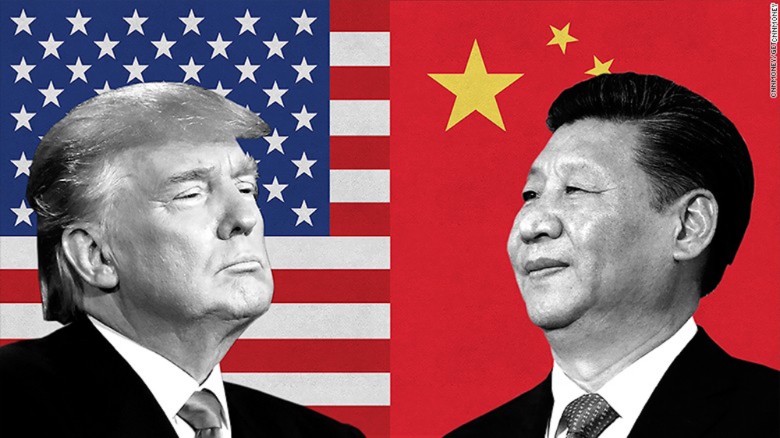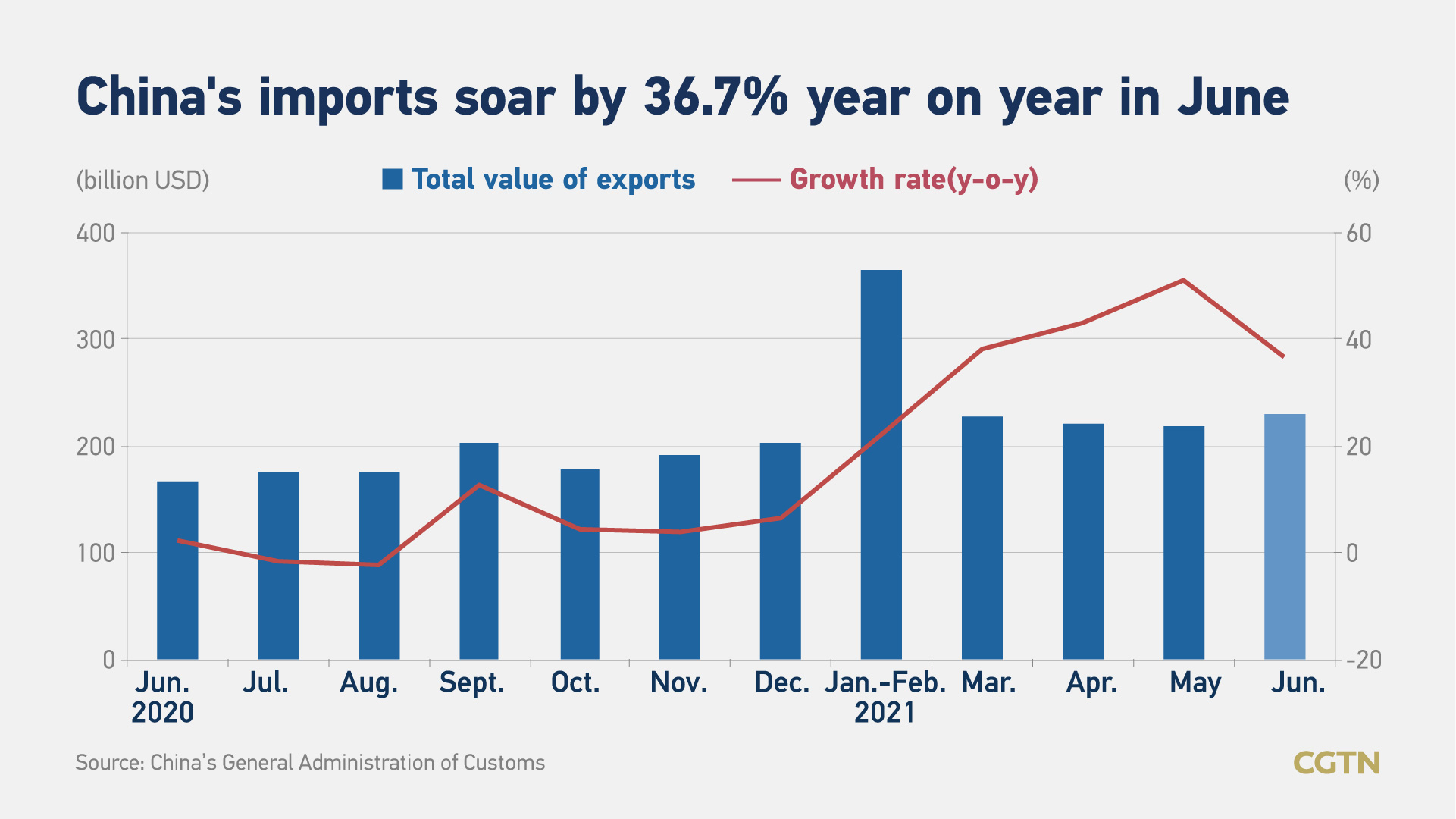U.S.-China Tensions: A Deep Dive Into The Potential For Renewed Cold War Dynamics

Table of Contents
The Economic Dimension of U.S.-China Tensions
The economic relationship between the U.S. and China is characterized by intense competition and escalating trade disputes, significantly contributing to the overall U.S.-China tensions. This economic rivalry fuels fears of a new Cold War dynamic.
Trade Wars and Protectionism
The ongoing trade war between the U.S. and China is a major source of friction. Both countries have implemented protectionist measures, leading to significant economic consequences.
- Examples of Specific Trade Disputes: The imposition of steel and aluminum tariffs by the U.S., retaliatory tariffs from China, and ongoing disputes over intellectual property theft allegations are prime examples.
- Economic Impact: These trade wars have disrupted global supply chains, increased prices for consumers, and negatively impacted economic growth in both countries and globally. The uncertainty created by these actions discourages investment and hinders long-term economic planning. The resulting instability further exacerbates the U.S.-China tensions.
Technological Competition and Decoupling
Competition in crucial technological sectors like 5G, semiconductors, and artificial intelligence (AI) has intensified the economic rivalry, pushing the relationship towards a potential technological Cold War.
- Examples of Technological Rivalries and Government Policies: The U.S. has implemented export controls on advanced technologies to China, while China has invested heavily in domestic technology development to reduce reliance on foreign suppliers. Investment restrictions and the push for technological self-reliance are also key elements.
- Implications for Global Innovation: This decoupling of technological supply chains hinders global innovation by limiting collaboration and potentially slowing the development of groundbreaking technologies. The competition for technological dominance is a central aspect of the renewed Cold War dynamics.
Geopolitical Rivalry and Military Buildup
Geopolitical competition between the U.S. and China, particularly in the Indo-Pacific region, significantly contributes to U.S.-China tensions and the potential for conflict that mirrors Cold War dynamics.
South China Sea Disputes and Regional Alliances
Tensions in the South China Sea, fueled by competing territorial claims and military exercises, have increased significantly.
- Specific Territorial Claims and Military Exercises: China's assertive actions in the South China Sea, including the construction of artificial islands and military deployments, have led to increased tensions with neighboring countries and the U.S. Joint military exercises by the U.S. and its allies in the region further escalate the situation.
- Impact on Regional Stability: This geopolitical rivalry threatens regional stability and could lead to unintended escalation, mirroring the proxy conflicts of the Cold War era. The increased militarization of the region is a significant factor in the renewed Cold War dynamics.
Taiwan Strait Tensions and Military Modernization
The status of Taiwan is a major flashpoint, with China considering it a breakaway province and the U.S. maintaining a policy of "strategic ambiguity."
- China's Military Modernization Efforts and US Arms Sales to Taiwan: China's continued military modernization, including the development of advanced weaponry and its growing naval capabilities, coupled with U.S. arms sales to Taiwan, heighten the risk of conflict.
- Potential Consequences of Military Conflict: A military conflict in the Taiwan Strait would have catastrophic global consequences, potentially triggering a wider regional and even global conflict. This scenario echoes the dangerous brinkmanship of the original Cold War.
Ideological Differences and Global Influence
Beyond economics and geopolitics, fundamental ideological differences between the U.S. and China contribute significantly to the current tensions and the potential for a new Cold War dynamic.
Democratic Values vs. Authoritarianism
The contrast between the U.S.'s democratic values and China's authoritarian system is a source of ongoing tension.
- Human Rights Concerns, Censorship, and Differing Views on Global Governance: Disagreements over human rights, freedom of speech, and the role of international organizations reflect fundamentally different approaches to governance and international relations.
- Impact on International Relations: These ideological differences influence alliances, partnerships, and cooperation on global challenges, creating a climate of distrust and competition.
Competition for Global Influence and Soft Power
Both the U.S. and China actively compete for global influence through diplomatic initiatives, economic aid, and cultural outreach.
- Competing Initiatives in Global Development and International Organizations: Both countries are vying for leadership roles in international organizations and competing for influence in developing countries through infrastructure projects, development aid, and other initiatives.
- Impact on Global Stability: This competition for global influence can destabilize international relations and create a climate of mistrust, reinforcing the dynamics of a potential new Cold War.
Conclusion: Navigating the Complexities of U.S.-China Relations
The multifaceted nature of U.S.-China tensions—encompassing economic competition, geopolitical rivalry, and ideological differences—points to a complex and potentially dangerous situation. The various elements discussed above strongly suggest a renewed Cold War dynamic is emerging. Understanding the interconnectedness of these factors is crucial for navigating this challenging period.
Key Takeaways: The economic, geopolitical, and ideological dimensions of the U.S.-China conflict are deeply intertwined and mutually reinforcing. The potential for miscalculation and escalation is high, creating significant risks for global stability.
Call to Action: Understanding the intricacies of U.S.-China tensions is crucial to preventing a renewed Cold War. Stay informed about the evolving situation and engage in thoughtful discussions to navigate this critical geopolitical challenge and mitigate the risks associated with the dynamics of US-China relations.

Featured Posts
-
 Trump Protests A Nationwide Uprising
Apr 22, 2025
Trump Protests A Nationwide Uprising
Apr 22, 2025 -
 Chinas Export Oriented Growth A Risky Strategy
Apr 22, 2025
Chinas Export Oriented Growth A Risky Strategy
Apr 22, 2025 -
 Turning Poop Into Prose An Ais Journey From Scatological Data To Podcast Gold
Apr 22, 2025
Turning Poop Into Prose An Ais Journey From Scatological Data To Podcast Gold
Apr 22, 2025 -
 Assessing The Impact Of Tariffs On Chinas Exports
Apr 22, 2025
Assessing The Impact Of Tariffs On Chinas Exports
Apr 22, 2025 -
 A Pan Nordic Army Assessing The Contributions Of Sweden And Finland
Apr 22, 2025
A Pan Nordic Army Assessing The Contributions Of Sweden And Finland
Apr 22, 2025
Latest Posts
-
 The Snl Harry Styles Impression A Disappointing Reaction
May 10, 2025
The Snl Harry Styles Impression A Disappointing Reaction
May 10, 2025 -
 Snls Failed Harry Styles Impression His Response
May 10, 2025
Snls Failed Harry Styles Impression His Response
May 10, 2025 -
 Harry Styles On That Awful Snl Impression His Response
May 10, 2025
Harry Styles On That Awful Snl Impression His Response
May 10, 2025 -
 Harry Styles Reaction To A Poor Snl Impression Devastated
May 10, 2025
Harry Styles Reaction To A Poor Snl Impression Devastated
May 10, 2025 -
 The Harry Styles Influence On Benson Boone Fact Or Fiction
May 10, 2025
The Harry Styles Influence On Benson Boone Fact Or Fiction
May 10, 2025
